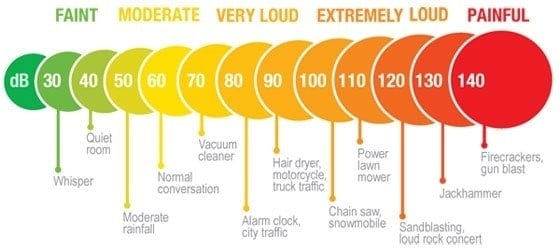Classroom Acoustics
- Abigail Hartzell, B.A. (Resident)
- Nov 13, 2019
- 1 min read

Modern classrooms are loud! This blog will define components of classroom acoustics and give tips to reduce background noise and reverberation in order to benefit learning environments.
Acoustics describes how sound travels in a room. Background noise and reverberation can cause poor acoustics in classrooms (1).
Background noise is any sound that makes it hard to hear. In a classroom background noise can come from many places, including sounds from outside of the building, inside of the building, and inside of the classroom (1).
Reverberation describes how sounds act in a room after they happen. Sounds stay in the room when they bounce off desks or walls. If many sounds do this at once, it can get very loud (1).
The World Health Organization (WHO) recommends maximum noise levels of 35 dB in unoccupied classrooms. Research shows that many schools are closer to 50 dB (3). Poor classroom acoustics can cause problems with speech understanding, classroom behavior, attention, and concentration. A quiet classroom helps both teachers and students (2).
Students who have hearing loss, ear infections, learning disabilities, auditory processing disorders, speech or language delays, or attention problems are even more negatively affected when classrooms have poor acoustics. Teachers are also impacted by poor classroom acoustics. Talking and teaching in a loud classroom can strain a teacher’s voice and cause voice problems over time.
Simple ways to improve acoustics include adding rugs, carpet, and curtains. A quieter classroom can also be obtained by turning off noisy equipment after use and replacing noisy light fixtures (2).
References
https://www.asha.org/public/hearing/Classroom-Acoustics/
American Speech-LanguageHearing Association. (2005). Acoustics in educational settings: Position statement. Available at http:// www.asha.org/members/deskref-journals/ deskref/default
https://www.hear-it.org/classrooms-far-too-noisy











Comments